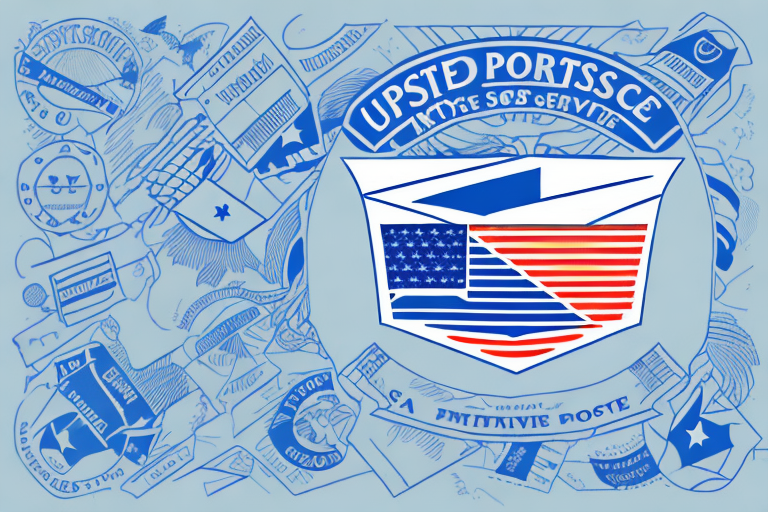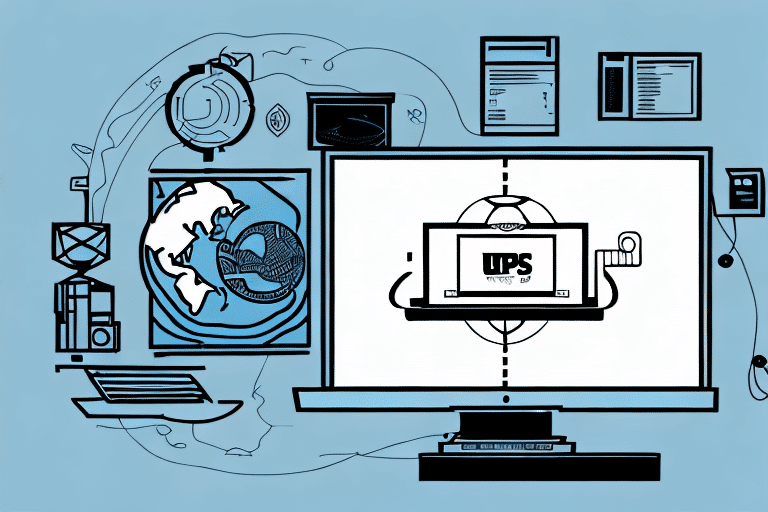Understanding United States UPS Shipping Rates: A Comprehensive Guide
As the world becomes more globalized, shipping has become an essential aspect of everyday life, especially for businesses. UPS is one of the most popular shipping carriers in the United States. Understanding the intricacies of UPS shipping rates is crucial for optimizing your shipping strategy and managing costs effectively. In this comprehensive guide, we will explore all facets of UPS shipping rates, including the basics, calculation methods, differences between shipping options, the impact of package dimensions and weight, payment and billing options, money-saving strategies, and more.
The Basics of UPS Shipping Rates in the United States
UPS shipping rates are primarily determined by the following factors:
- Package Weight and Size: Heavier and larger packages typically incur higher shipping costs.
- Destination Distance and Location: Shipping rates increase with the distance and vary based on the destination's geographical location.
- Shipping Option Chosen: The level of service and speed selected (e.g., overnight, two-day) significantly impact the rate.
These factors form the foundation for calculating UPS shipping rates within the United States. However, rates can vary based on specific regulations and requirements of each region.
UPS offers a variety of shipping options tailored to different needs. Customers can choose services like weekend or holiday deliveries or opt for same-day delivery. While these options come at an additional cost, they provide enhanced convenience and flexibility.
The type of package being shipped also affects UPS shipping rates. For instance, hazardous materials or fragile items may require special handling and packaging, leading to increased shipping costs. Proper labeling and packaging are essential to avoid additional fees or delivery delays.
How to Calculate UPS Shipping Rates for Your Packages
Calculating your shipping costs involves weighing your package and measuring its dimensions. With this information, you can use a web-based UPS shipping calculator to obtain an estimated rate based on these measurements. Additionally, various online shipping calculators are available, such as the UPS Shipping Calculator and the USPS Shipping Calculator.
Beyond basic calculations, you can incorporate UPS's additional features, including insurance, declared value, and special handling, to tailor the shipping service to your specific needs. It's important to note that UPS shipping rates can fluctuate based on destination, shipping method, and seasonal demand. For example, shipping during peak holiday seasons may result in higher rates due to increased demand. Exploring alternative shipping options, such as ground shipping or utilizing different carriers, can help reduce costs. Comprehensive research and rate comparison ensure you receive the best value for your shipping requirements.
Understanding the Differences Between UPS Shipping Options
UPS provides several shipping options, each catering to different needs and scenarios:
- Ground Services: Primarily for domestic shipments, with delivery times ranging from one to six days depending on the distance.
- Air Services: Designed for both domestic and international shipments, offering faster delivery times ranging from one to four days. UPS offers three main types of air shipping:
- UPS Worldwide Express
- UPS Worldwide Expedited
- UPS Standard
- International Services: A combination of ground and air services, tailored based on the destination country's regulations and infrastructure.
When selecting the appropriate UPS shipping option, consider factors such as package size and weight, destination, and the urgency of delivery. For example, ground shipping may be cost-effective for small, non-urgent domestic packages, while UPS Worldwide Express is ideal for large, time-sensitive international shipments.
Additionally, the level of tracking and insurance varies with each shipping option. While UPS provides basic tracking and insurance across all services, higher-value packages might benefit from enhanced coverage and more detailed tracking features.
Tips for Saving Money on UPS Shipping Rates
Implementing strategic measures can help reduce UPS shipping costs:
- Opt for Ground Shipping: Whenever possible, choose ground shipping as it is generally more cost-effective compared to expedited air services.
- Utilize a UPS Account: Registering for a UPS account can unlock discounts and help you avoid surcharges.
- Select Appropriate Packaging: Using the right size and type of packaging minimizes dimensional weight charges, reducing overall costs.
- Leverage UPS Cost-Saving Tools: Services like UPS SurePost can offer significant savings for certain types of shipments.
Another effective strategy is to consolidate shipments. Combining multiple packages destined for the same location into a single shipment can help avoid multiple shipping fees and may qualify you for volume discounts. Additionally, regularly comparing rates from different carriers ensures you are receiving the most competitive pricing for your shipping needs.
Navigating UPS Shipping Rate Increases and Changes
UPS periodically adjusts its shipping rates, influenced by factors like fuel prices, operational costs, and market demand. It's essential to stay informed about these changes to manage your shipping budget effectively.
To navigate UPS shipping rate increases and changes:
- Regularly Review Shipping Invoices: Compare current invoices with previous ones to identify any unexpected rate hikes.
- Adjust Shipping Strategies: Consider alternative shipping methods or negotiate better rates based on your shipping volume and frequency.
Moreover, rate changes can impact your customers if you decide to pass on increased shipping costs. Transparent communication about any changes in shipping fees and offering alternative shipping options can help maintain customer satisfaction and trust.
How to Track Your UPS Shipments and Delivery Times
Effective tracking ensures you and your customers are informed about the status of shipments. UPS offers multiple tracking options:
- UPS Account Dashboard: Access the Tracking tab to view real-time updates on your packages.
- UPS My Choice: Sign up for this service to receive email or text alerts about your shipment's progress.
- UPS Mobile App: Available for both iOS and Android devices, the app allows you to track packages, manage deliveries, and schedule delivery times.
For international shipments, UPS provides specialized tools to monitor packages as they pass through customs and traverse borders. The UPS TradeAbility tool offers insights into customs regulations, duties, and taxes for over 160 countries. Additionally, the UPS WorldShip software facilitates the creation and management of international shipments, providing real-time tracking until the package reaches its destination.
Understanding International UPS Shipping Rates and Fees
International UPS shipping rates and fees are influenced by several factors, including the destination country, chosen shipping option, and package size and weight. Shippers must also account for customs fees based on the destination country's regulations and the package's contents. Familiarizing yourself with international shipping regulations is vital to avoid unexpected costs and ensure compliance.
Key considerations for international shipping with UPS include:
- Delivery Time: Delivery times can vary significantly based on the destination country, selected shipping option, and potential customs delays. Planning ahead and choosing an appropriate shipping method is crucial.
- Packaging: Proper packaging is essential to protect items during transit. UPS offers packaging services and materials to ensure items are securely packaged for international shipping.
Additionally, understanding the tariff and import regulations of the destination country can help in accurately estimating total shipping costs and avoiding potential legal issues.
The Impact of Package Dimensions and Weight on UPS Shipping Rates
Package dimensions and weight are pivotal in determining UPS shipping rates. Larger and heavier packages incur higher shipping costs, and dimensional weight calculations can further influence the rate. To minimize shipping expenses:
- Use Appropriate Packaging: Select the right box or envelope size to accommodate your items without excessive empty space.
- Optimize Package Weight: Use lightweight packing materials to reduce the overall weight without compromising the safety of the items.
- Understand Dimensional Weight: UPS calculates dimensional weight by considering the package's volume. Ensuring your package dimensions align with the actual weight can help avoid unnecessary charges.
By meticulously managing package dimensions and weight, you can achieve significant savings on shipping costs.
Avoiding Common Mistakes When Using UPS Shipping Services
Effectively utilizing UPS shipping services involves avoiding common pitfalls that can lead to increased costs or delivery delays:
- Incorrect Shipping Information: Always double-check the shipping details before submitting to prevent misdeliveries.
- Poor Packaging: Using inappropriate or insufficient packaging can damage items and lead to additional fees for repackaging.
- Ignoring Shipping Regulations: Failing to adhere to international shipping regulations can result in customs delays and fines.
- Neglecting Cost-Saving Tools: Not taking advantage of UPS's available cost-saving tools and services can lead to higher shipping expenses.
How to Get Discounts on United States UPS Shipping Rates
Reducing shipping costs is achievable through various discount opportunities offered by UPS:
- Sign Up for a UPS Account: A UPS account provides access to exclusive discounts and helps you avoid certain surcharges.
- Utilize UPS Cost-Saving Tools: Services like UPS SurePost can offer significant savings for eligible shipments.
- Regular Shipping: Consistent shipping activity can qualify you for rewards programs and volume-based discounts.
- Third-Party Shipping Consolidators: Partnering with aggregators can provide access to lower shipping rates through bulk discounts.
Implementing these strategies can lead to substantial cost savings over time.
Understanding the Various Payment and Billing Options for UPS Shipping
UPS offers a range of payment and billing options to accommodate different business needs:
- Credit Cards: Convenient for immediate payments and widely accepted.
- Electronic Funds Transfer (EFT): Allows for direct bank transfers, suitable for regular shippers.
- Direct Debit: Enables automatic payments directly from your bank account.
- Customized Business Solutions: UPS provides tailored billing options, including invoices and charge cards, for businesses with specific needs.
Choosing the right payment and billing option can streamline your shipping processes and improve financial management.
How to Resolve Issues with United States UPS Deliveries
Encountering issues with UPS deliveries can be frustrating, but there are effective ways to address them:
- Check Tracking Information: Review the tracking status to identify where the shipment may have encountered a delay or issue.
- Contact UPS Customer Service: Utilize the chat feature on the UPS website, call the customer service hotline, or email UPS for assistance.
- File a Complaint: If you're unsatisfied with the resolution, you can escalate the issue by filing a complaint with the Federal Trade Commission or the Better Business Bureau.
Proactive communication and prompt action are key to resolving delivery issues effectively.
The Pros and Cons of Using United States UPS for Your Business Needs
UPS is a widely trusted shipping carrier in the United States, offering numerous advantages as well as some drawbacks:
- Pros:
- Reliable service with consistent delivery performance
- Fast delivery times across various shipping options
- Diverse range of shipping services for domestic and international needs
- Cost-saving tools and features to reduce shipping expenses
- Comprehensive tracking and insurance options
- Cons:
- Potential delays during peak shipping seasons
- Occasional customer service challenges
- Frequent changes in shipping regulations and costs
Weighing these pros and cons helps businesses determine if UPS aligns with their shipping requirements and budget.
How to Choose Between United States UPS and Other Carriers for Your Shipping Needs
Selecting the right shipping carrier is vital for optimizing your logistics and managing costs. When comparing UPS with other carriers, consider the following factors:
- Reliability: Assess the carrier's track record for on-time deliveries and consistent service quality.
- Shipping Options: Ensure the carrier offers the necessary shipping services and options that meet your business needs.
- Shipping Rates: Compare rates to find the most cost-effective solution without compromising on service quality.
- Cost-Saving Tools: Look for carriers that provide tools and programs to help minimize shipping expenses.
- Customer Service: Evaluate the availability and responsiveness of the carrier's customer support.
- Shipping Regulations: Understand the carrier's compliance with domestic and international shipping regulations.
By thoroughly comparing these aspects, you can select the shipping carrier that best fits your business needs and budget, ensuring efficient and cost-effective shipping operations.




















